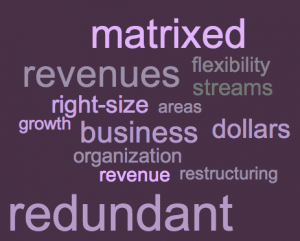The New York Times today published another entry into the annals of a trend I’ve noticed that I call the “But can he do it?” story. It’s a series of stories that profile a white guy “reinventing” the media, as reported by a white guy in the media. This one is about David Karp, the 26-year-old “wunderkind” who invented Tumblr. It’s filled with quotes like: “‘He has very little notion of what it means to be a conformist,’ or to measure his thinking against abstract conventional wisdom.”
Eye roll. A privileged white guy is a nonconformist? OK, if you say so.
But this is only one article, one that follows many, many eye-rollers before it with the same theme. For example, there was the Ken Auletta profile of Tim Armstrong in The New Yorker last year, in which he questions whether Armstrong’s strategy of revitalizing AOL’s home page and investing in local will pay off. (I guess Armstrong didn’t bother to tell Auletta that actually the other part of this “strategy,” the winning part, was buying the Huffington Post a week later.)
The Washington Post recently did a “But can he do it?” piece on whether Chris Hughes really can revitalize The New Republic. And speaking of white guys revitalizing the media: Can Josh Tyrangiel remake Businessweek now that it’s Bloomberg Businessweek? And speaking of The Washington Post (talk about the insularity of the media), can Robert Thompson remake it under NewsCorp?
On and on. Obviously the trend is indicative of a much larger problem, which is that white guys in the media are constantly (unconsciously?) creating these stories so they can continue to reinforce their own relevancy. The narrative of “But can he do it?” is really their own, so they think it’s interesting for others to read about. And then their editors, who are for the most part white guys in the media, also think it’s interesting, so they OK the stories, and the column inches, and the emphasis in coverage. But obviously no one else cares whether these white guys in the media will succeed except for other white guys in the media.
Really: Will Bloomberg Businessweek make money? Will David Karp reinvent advertising on the Internet? Well, WILL THEY?
Who cares?
And also, of course, the articles never actually say or even predict whether these white guys will or will not reinvent these media properties/websites, because the writers have no idea. Which just reinforces how useless this so-called reporting truly is. No one actually knows how this business is going to go in the next few, handful, several, many years in the future. These stories might as well be headlined: “Does this white guy know something the rest of you white guys don’t?” The answer, at the end of each, is, “Maybe!” And also, if not explicitly, “I hope some day this guy or a guy like him will hire me!”
The same is true, by the way, for political profiles and business profiles. “Can this white guy win this election/policy argument/budget showdown against other white guys?” “Can this white guy sell more lightbulbs/lumber/lathes than the other white guys?”
It’s boring. It’s irrelevant to most of the population. No one knows the answer anyway. And yet it’s the focus of coverage because, unfortunately, white guys run everything. So it’s a problem for women, gays, minorities and anyone else who would like see themselves and their lives and struggles reflected in the media but is completely un- or under-represented.
Final note on this: “But can he do it?” is basically is Ken Auletta’s reason for being. It seems like every article he writes is another breathless “But can he do it?” He wrote a whole book that was basically a “But can they do it?” about the two white guys who created Google. Rarely, he writes a “But can she do it?” But given that there are only two powerful ladies in media (obviously, Jill Abramson and Sheryl Sandberg), these are unusual. But fair’s fair, he did write them, though I’ll warn you that neither of these women has any answers about the future of media, either.
Read More
 The amount of corporate-speak in the memo from Time Inc. CEO Joe Ripp regarding layoffs at that company today is truly astounding. I’d be impressed if I didn’t know it meant lots and and lots of journalists were going to be joining the proverbial breadlines as the business spins out from Time Warner and attempts to make its own way in the weary world of today’s media landscape.
The amount of corporate-speak in the memo from Time Inc. CEO Joe Ripp regarding layoffs at that company today is truly astounding. I’d be impressed if I didn’t know it meant lots and and lots of journalists were going to be joining the proverbial breadlines as the business spins out from Time Warner and attempts to make its own way in the weary world of today’s media landscape.